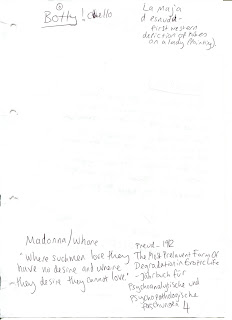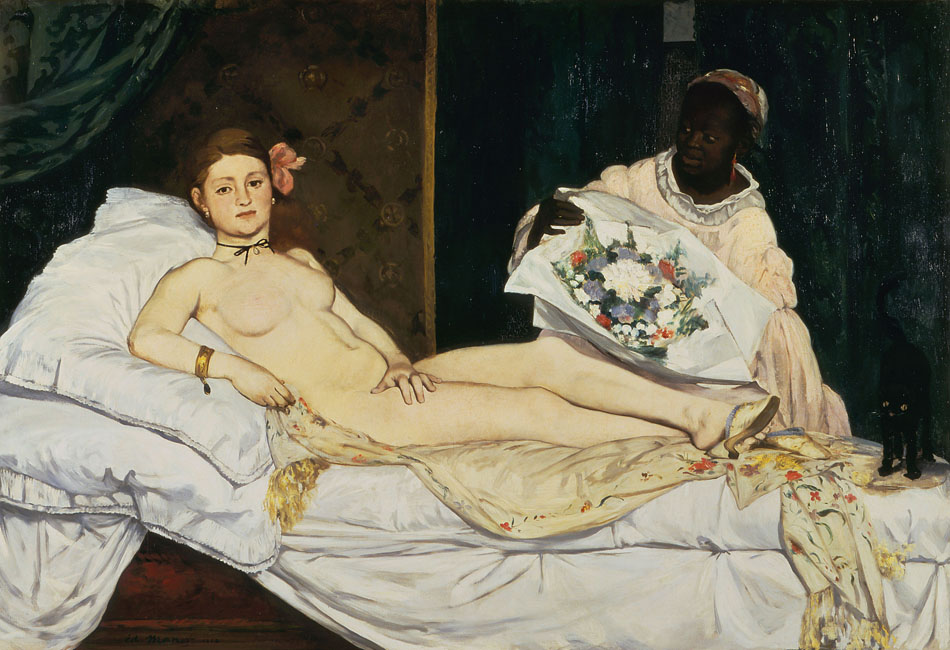Lorna's Visual Research Journal
Wednesday 20 March 2013
Sunday 17 March 2013
Babar
Babar is about an elephant who, after his mother is
killed by a hunter, leaves the jungle and enters the city, where he learns
about civilisation. He returns to the jungle, wiser, and becomes the king of
the elephant kingdom. This book has been heavily criticised for attempting to
justify colonialism. The writer Adam Gopnik, in his article Freeing the
Elephants, thinks that the book is more about the lure of organised
civilisation, and the safety and easiness of it, is something that elephants
can feel too – “"while it is a very good thing to be an elephant, still,
the life of an elephant is dangerous, wild, and painful. It is therefore a
safer thing to be an elephant in a house near a park.""
Little Black Sambo
A children’s book first published in 1899, which
has been revised many times as black people have gained more equality over the
course of the 20th century. Sambo is an indian boy who meets some tigers while
he’s on a walk, and gives them his clothes in exchange for them not eating him.
The tigers argue over their new clothes, and melt into butter. The caricature
of a black child was hurtful to black children who read it, and as early as
1932 it stopped being recommended to school children. The book has been remade
and rebranded by many writers and illustrators, who have changed it to names
such as “little kim”, “the boy and the tigers” and “chibikuro sampo” (a
Japanese version, which translates to little black sambo).
Matilda
The distinctive illustrative style of Quentin
Blake shows the story of a little girl who is neglected by her vile parents,
and develops telekinetic psychic powers. Quentin Blake said in an interview
that his informal style makes his works more approachable, encouraging children
to engage with the books. The illustrations of her sitting by piles of books,
smiling, particularly speaks to shy, bookish children, who feel that books are
their only friends, and lets them know that it’s okay to be like that. Matilda
is a brilliant example of a female main character in a book aimed at both girls
and boys, something that is surprisingly rare in child-oriented media.
Paintings of Venus
Venus is the roman goddess of love, sexuality and
fertility, being the human embodiment of these things.
She has been painted a lot and here I have
looked at two paintings of her, by Titian and Manet. This is Venus of Urbino, a
painting by Titian from the 1500s.
She is inside, a change from her usual
depictions (she was born from sea foam so she is often in the sea), and she is
looking directly at the viewer, engaging with them. As well as this, the
painting is erotic, her body language being inviting and relaxed. However, the
dog in the background is a symbol of fidelity, and her hand is delicately
hiding her vulva as her servants search for clothes in the background.
In the Manet painting, which is inspired by Venus of Urbino,
she is depicted as a French prostitute, wearing high heeled shoes, an orchid in
her hair, a bracelet, pearl earrings, and other things. This also has some
marked differences in that the animal depicted is a cat, another indicator of
prostitution, and her hand is firmly placed over her vulva, as she looks away
from a bouquet of flowers, likely a gift from a client. This painting is also
very sloppy and lacks midtones, which was shocking at the time, as it depicts a
harsh and sickly goddess, rather than a beautiful fantasy.
Wednesday 30 January 2013
Lecture Notes - 30/1/13
The Hero In Children's Books
Warwick Goble – Jack and the
Beanstalk
Teenager – often shown as young boy
Journey! - underprivileged, throughout
journey completes tasks and transforms
Cultures have their own versions of
this story
Fee fi fo fum etc
Has help given to him by the the
giant's wife – a woman
Gold egg laying goose
Grimm's fairy tales are very dark, were
cleaned up by the victorians
Roald Dahl tried to have dark stories
Gustaf Tenggren
– Tom Thumb
Youngest of
several children – seen as weak, has to prove his place in the
family
Gets abandoned in
the forest with bros and siss by neglectful parents
Retraces his steps
using breadcrumbs
An ogre's house –
ogre smells fresh meat, very primal/otherworldly?
Takes the ogre's
boots – contain some of the ogre's power
Child may be too
young to understand some of the deeper themes and meanings
Tom rescues the
ogre's daughters, gets help from ogre's wife (a mother figure).
There are good
people or bad people, no in-between.
Goes through a
transformation to a powerful character
Ed Bryan
(Nosy Crow Publishers) – Cindarella
Female characters
are usually weak or victims – cindarella is a rare female
protagonist.
Step mum and
sisters are jealous of her beauty and turn her into a slave.
Ahead of its time,
containing a blended family which is a contemporary story theme.
Passive –
waiting for her prince to come and rescue her.
Links between this
and matilda – nasty family who doesn't appreciate her. Matilda is
an empowered child who saves herself, however.
Ann
Sexton
– feminist poet
Guardian
article by Adam Philips
who points out that the fairy godmother is the person who helps, and
the people holding cindarella back were female.
Winnie Fitch
– Red Riding Hood
Nobrow and 50-60s
aesthetic. Lithography print. Working with texture and limited
colour.
LRRH, hero, goes
on a journey. The wolf is a metaphor for a sexual predator. Very
contemporary issue. Predatory man.
Red is associated
with sexuality and passion, her journey is into puberty (woods are
the unconscious, where one becomes more mature and knowledgable).
Red hood is a
symbol for a prostitute, in 1700 France in particular.
Is rescued at the
end by the woodcutter, but in some older versions she does not get
away.
Gustave
Dore – illustration of
her in bed with the wolf.
Herge
– Tin Tin
Young reporter, in
comic books, based on Herge's ideas as an inventor. Snowy the dog is
his companion. Has freedom to travel anywhere, has no family.
Scott
McLeod – tintin
stories allow readers to mask themselves with tintin and allow
themselves to safely enter a sensually stimulating world.
Tintin is a
gentleman. Always comes out on top.
W.E. Johns
– Biggles
Stories about a
pilot's adventures, graphic novel. As he grows and matures, his role
changes. Becomes an astronaut. Authority from the author's life as a
pilot
Where
The Wild Things Are – Maurice Sendak
Sent up to bed,
bedroom becomes a jungle. Child (Max) goes through transformation.
Much smaller than the animals he finds, who are a metaphor for either
parents or the child's unheard anger. Child has power over these Wild
Things. Overpowers by staring at them. He is their king. Way for a
child to work out anger. Banned from many school libraries for a
while because they were seen as encouragement to disrespect parents
and authority.
John R Neill –
Little Black Sambo
Racial stereotypes
were normal in the 60s. Cultural terms, were used without question.
Character is very powerful, negotiates with lions to avoid being
eaten. Gives them his umbrella and clothes. They fight over the
clothes and turn into butter...
C Carey Cloud,
1934 – same book, character is a caricature of a black person.
Black face and red lips.
Story
of Little Babaji – Fred Marcellino – updated
version, looks more like a real life child who lives in India.
Barefoot
Book of Earth Tales – Anne Wilson
Devon and Cornwall
are so white.
Elephant
Dance – Sheila Moxley
Stories
about british child's heritage in a different country/culture.
1st/2nd
generation immigrants.
Mia's
Story – Michael Foreman
South american
girl in extreme poverty. Dad brings home a small dog, who escapes and
runs into the mountains, so Mia goes into the mountains on a horse to
find the dog. Finds pretty stuff, white flowers (symbol of hope).
Comes from a difficult background, and sees that things are hopeful
and nice if you want them to be.
Pretty
Salma – Niki Daly
African LRRH
story. Meets wolf on the way to market. Manages to outwit him,
positive female character.
Lost
and Found – Oliver Jeffers
THERE'S AN ANIMATION
Story about
friendship between a boy and a penguin. Takes the penguin home but
misses him.
Babar
– Jean de Brunhof
Babar
is a normal elephant in the jungle, and is camptured, acquires
clothing and learns to stand upright, metaphor for colonialisation.
Ariel Dorfmann has
written a scathing critique of this book and what it represents.
Herbert K Kohl and
Vivian Paley also
thought it was offensive and tried to defend colonialism.
The
Empire's New Clothes (Dorfmann) has
also written about donald duck and mickey mouse.
Beegu
– Alexis
Deacon
Story about an alien, representing an outsider, for weird children to
identify with when they don't feel they belong to a group. She looks
weird because she's an alien, but eventually finds some friends who
accept her. Eventually, her mother comes to find her and save her.
Melrose
and Crock – Emma
Chichester-Clarke
A sausage dog and a crocodile being friends lol
Charlie and Lola – positive female character, story about a brother
and sister being friends aww
Wizard
of Oz – WW Denslow
Dorothy is a strong female character – archetype of good witch and
bad witch, represent good and bad mothers. Children can't see people
as both good and bad, have to be one or the other.
Stone
Girl Bone Girl – Sheila
Moxley
Story about a rare female archaeologist, disproving the creation
myth.
Pippi
Longstocking – Lauren
Child (charlie and
lola lady)
Strong fem character for the time she was made, reimagined by lauren
child. Does boy things, is assertive and has superhuman strength.
Saves contempt for pompous adults. “strength of ten policemen”
but is not violent.
Matilda
– Quentin Blake
Subscribe to:
Posts (Atom)




















